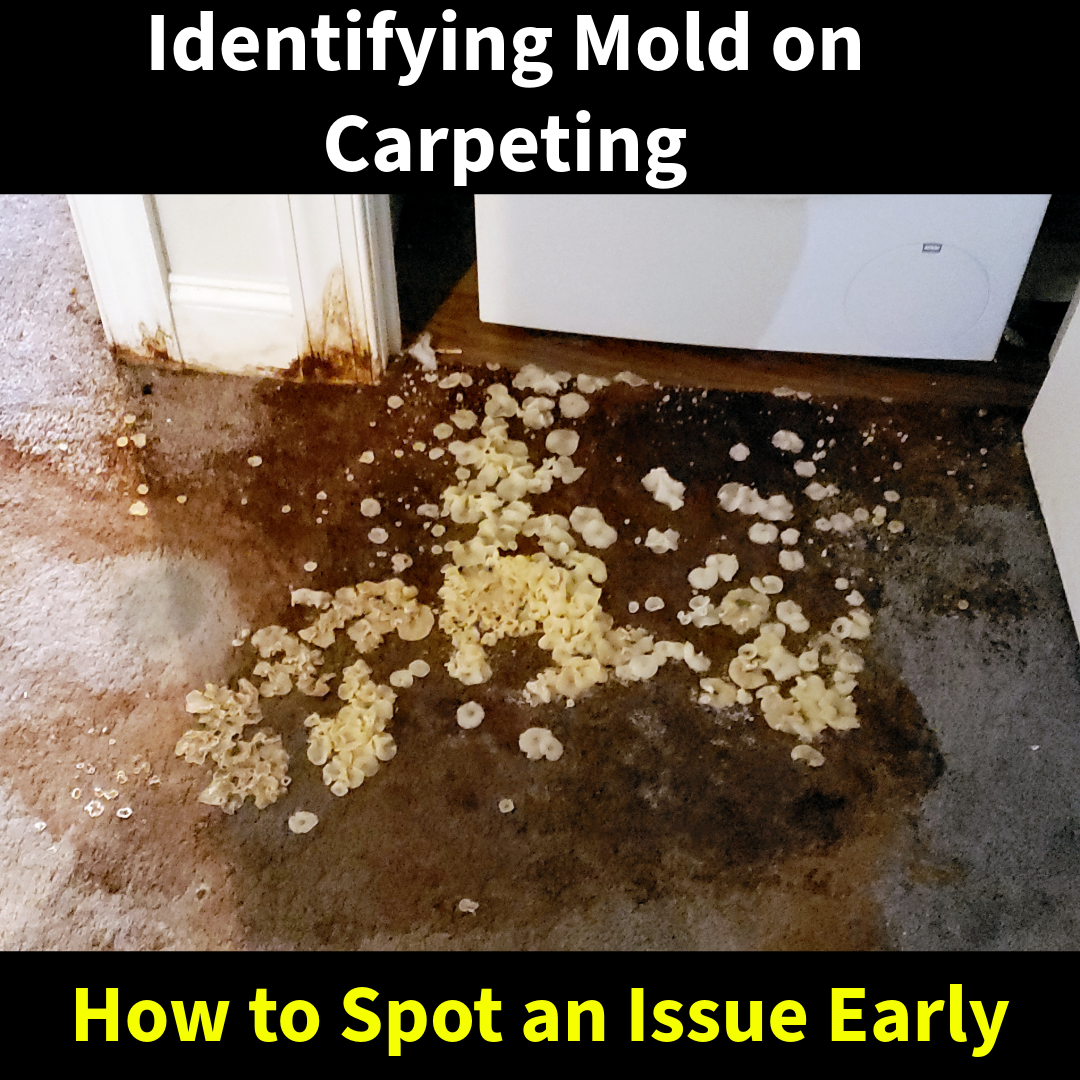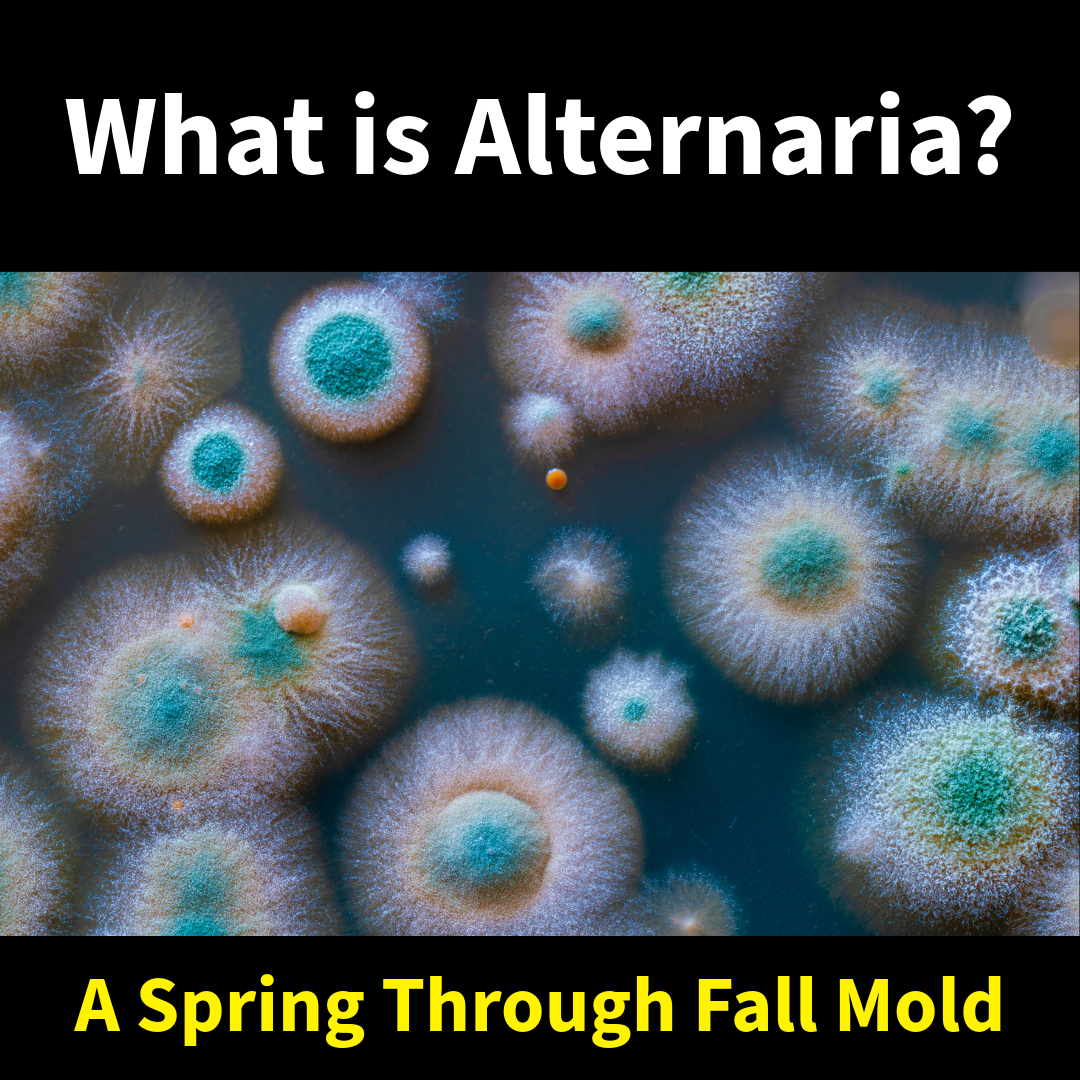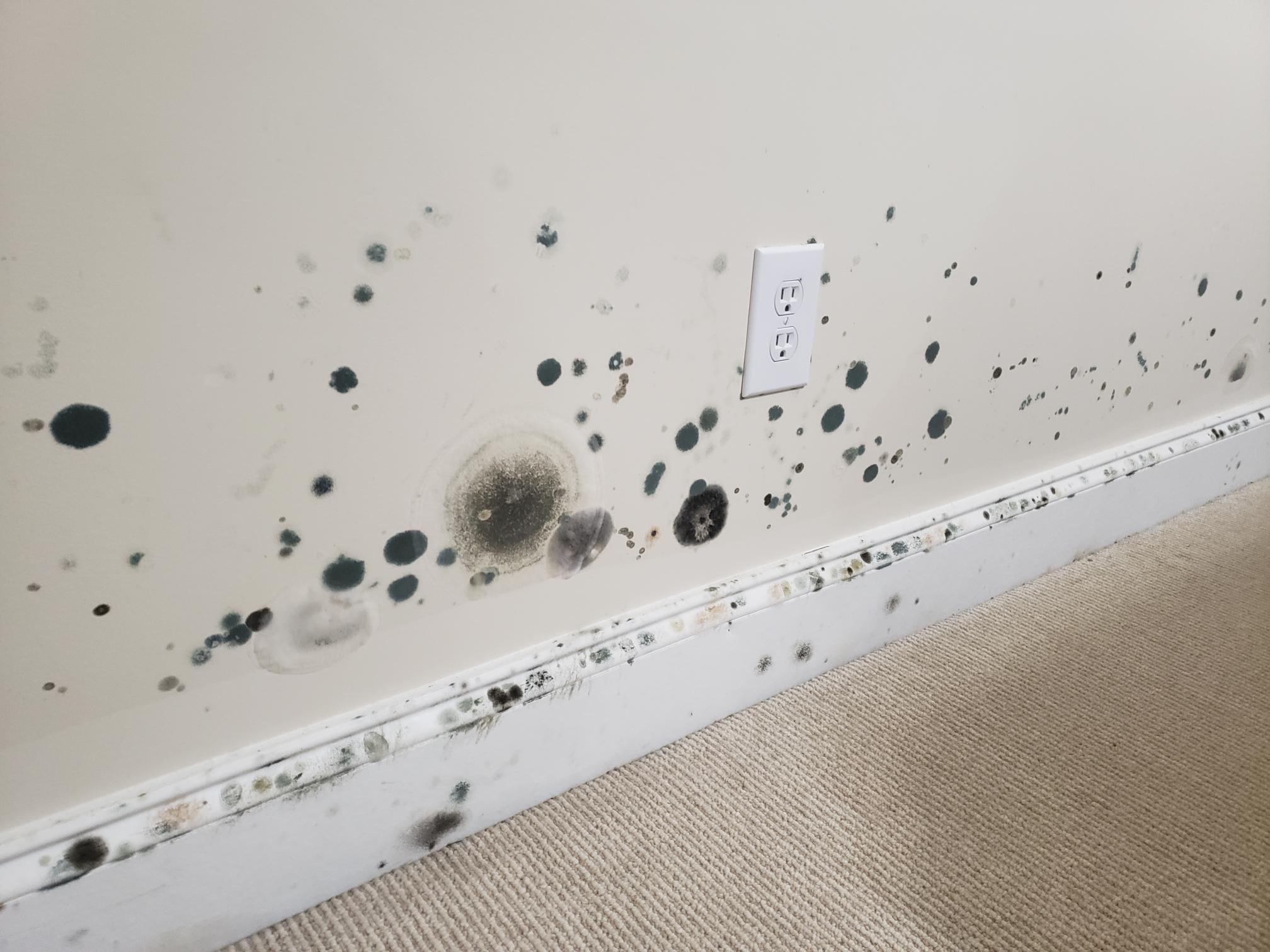Just because mold is not immediately apparent or visible on a carpet’s surface does not mean that mold growth is not in progress. In fact, mold will probably only be visible on the surface of carpets in unusually severe cases of growth, such as carpet damaged in flooding that has remained wet for some time. The following are some examples of identifiable instances where mold growth has occurred or is likely to occur:
- Visible Mold Growth: As stated above, this can be a rare case, but sometimes it may be obvious from visual inspection that mold growth is occurring. Carpet in this condition is most likely not salvageable and should be disposed of and replaced. Often, even if mold growth is not visible on the top of carpeting, it may be occurring underneath the carpet where it can’t be easily seen. Carpet suspected of containing mold should always be examined on both sides.
- Carpet Mildew: Any discoloration or odor on carpeting that might be described as mildew is probably a case of mold.
- Wet or Water-Damaged Carpet: Any carpet that has been subjected to water damage from flooding or standing water will most likely need to be disposed of. Conditions are ripe for mold growth, in this case. Even if visibly apparent mold growth has not yet begun, it is highly likely to happen unless the carpet is completely removed, cleaned and dried within 24 to 48 hours. Even then, removal and cleaning are not guaranteed to prevent mold growth. It is more likely that the carpet will need to be replaced.
- Wet Padding Beneath Carpet: If padding beneath the carpet has become wet for any reason, or has become moist from condensation, the padding as well as the carpet on top are at risk for mold growth. The padding may need to be replaced, as will the carpet, in some cases.
- Basement Carpet: Carpeting in basements below grade level is especially at risk in areas where humidity is high, or where wide temperature swings can produce condensation.
- Odors and Stains: There is a wide range of things that can cause odors and stains on carpets. If mold is suspected, samples can be taken and sent for analysis to determine if mold growth has occurred.


